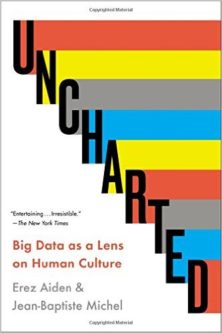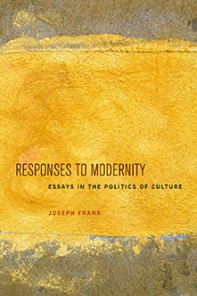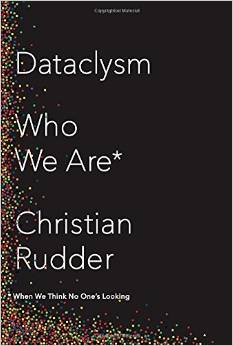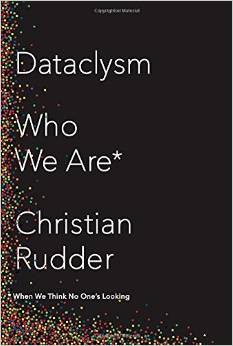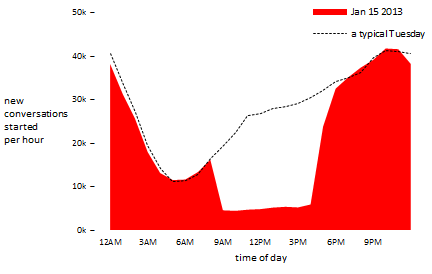by Nick Levey
Working in an Australian university, it’s easy to be persuaded by James Ley’s claim that a persistent quality of modern literary criticism is “a nagging sense of doubt about its necessity.”¹ In a familiar narrative, recent uncertainties in the Australian higher-education market (including the ever-looming deregulation of fees, which the Abbott government seems determined to leave as its education legacy)² continue to cast unease through student and academic cohorts, and it can be difficult not to let worries about enrollments and redundancies creep into the background of one’s writing. An institution I’m familiar with was this year forced to cut its first-year English offerings from six courses to two, for instance, not to mention almost proportional losses of departmental staff. And while there are pedagogical justifications for the reconfigured program, everyone certainly wonders what might happen to the remainders at the next shuffling of the cards.
Unease is effortless to entertain, but one can make more productive use of doubts about the utility of criticism to show that what has sustained the activity of writing about writing is not just the usefulness of ideas, interpretations, and evaluations, but of characters. Like literature itself, the history of criticism is one defined by character types, writers who operate as necessary ciphers for certain kinds of cultural positioning, of manners, sensitivities, and standpoints that meaningfully stir and satisfy the needs of readers just as much as Hamlet or Philip Pirrip. The point is that the necessity of criticism can be articulated equally by the roles critics play as much as in anything they say.
There are individual figures that predominate in this scene – Eliot and Richards, Moretti and Sontag. But there are wider subdivisions that describe their roles too, Ley’s aforementioned book suggesting we see at least two broad categories. The first is the figure of the “public critic,” the practitioner of what, following George Watson, Ley calls “descriptive criticism,” an “informal combination of personal responsiveness and literary analysis” (The Critic in the Modern World, 3). This persona speaks to practical concerns of working within the public sphere: the difficulty of achieving individuation while addressing a mass audience, of communicating mastery without seeming haughty, of working to tight deadlines. On the other side of the divide lies the academic critic. This character is more beholden to institutional considerations, and so has something of a vested interest in demonstrating the specialization of his or her pastime (if it needs to be taught in a university, literary criticism must inherently have something of a technical nature),³ and developing this specialization into an aesthetic. The history of modern criticism sees these two roles and their respective values in increasing conflict, with one side’s strengths appearing as weaknesses to the opposition. The public critic’s ready comprehensibility is, for example, touted as the sign of a thinker who is “not thinking hard enough” (The Critic in the Modern World, 3) while the abstruse academic is lambasted as a scion of institutional routinization.
The late American critic Joseph Frank (1918-2013) was one of those interesting figures who managed to straddle both domains at different stages of his career. This is largely because he had the honor of being well known for two very different critical exercises: a founding work of narrative poetics promoting the spatial appraisal of modern literature, and a towering literary biography, his five-volume study of Fyodor Dostoevsky universally praised as a masterwork of the genre. Frank’s idea of spatial form has, as Kermode puts it “entered the jargon of the graduate school” (“A Reply to Joseph Frank”), but the Dostoevsky biography and much of the remainder of his critical work expresses an affinity for the practice and politics of the public critic, eschewing the academy’s technical values and mannerisms. The present volume under review, Responses to Modernity: Essays in the Politics of Culture (Fordham UP 2012) certainly operates most consistently within this non-academic role: totalizing comments on the humanistic value of literature and the encouragement to appreciate the importance of personal narrative show Frank’s preference for a style of criticism that works outside of institutional conventions. More than any coherence of reply to the current landscape, what is offered throughout is the history of a thinker engaging with the many characters of modern writing and thought, with Frank’s ultimate response to modernity describing literary criticism as a field from which the movements and tensions of culture can be clearly distilled.
First published in 1945 and later collected in The Widening Gyre, “Spatial Form in Modern Literature” was the essay that built Frank’s reputation as a reader. Its argument posed that much of modern writing broke away from what Lessing had described as literature’s dependence on time, in favor of the spatial form more common to the plastic arts. In its literary manifestation, spatial form registered a questioning of historical progress, promoting cyclical, ‘mythical’ time through an increasing drive towards fragmentation and abstraction. The strategies for achieving this spatial form were varied: a text heavy in cross-references, a non-linear structure, the focus on freezing moments out of the stream of time. The Homeric parallels in Joyce, the self-referential language of The Waste Land, the maximalist detail in Proust all marked a growing interest in spatial form, and for Frank were to be seen as an attempt to escape the temporal and its incessant movement towards disorder. Following the ideas of Worringer, Frank argued that this spatial turn was a symptom of the ‘insecurity, instability, the feeling of loss of control’ typical of modernity (The Widening Gyre, 55). The fragmentation of Ulysses was not necessarily expressive of instability and chaos, then, but a wish to work against the flux of time, composing static and interconnected ‘linear-geometric’ chunks that secured a different kind of order. Hence the affinity in such works for mythic time, a comforting sense of repetition rather than the constant progression into uncharted territory. Spatial form, while seeming to mark an embrace of the new, was essentially conservative.
When we read this essay today, nearly seventy years since its original publication, we witness an erudite and ambitious young reader trying to sum up his own age, synopsizing the moment in which he is present. As an act of totalization, the essay has been equally influential and controversial; Frank Kermode, among others, argued that spatial art’s ahistoricity seemed uneasily fascist (The Sense of An Ending: Studies in the Theory of Fiction, 110-111). But the essay still seems useful for approaching the peculiarities of some of today’s fiction. In a 2012 interview, Frank claimed that David Foster Wallace understood his biographical criticism better than he even understood it himself, Wallace’s review of the Dostoevsky project “being the best thing written on [his] work.” In Infinite Jest he might have seen confirmation of Wallace’s deep appreciation of his spatial theory too. It’s a well-known tidbit, for example, that the narrative of Infinite Jest was organized around the figure of a Sierpinski gasket, a fractal made up of recursively subdividing triangles, rather than a chronological timeline (Wallace discussed this in a 1996 interview with Michael Silverblatt). As such, the narrative has an obvious spatial element a reader must consider when trying to understand it. Events connect recursively to others, and the novel is often reticent to move forward in time, pointing deeper inwards to the detail of moments rather than along to the next event in its schedule. The ‘missing’ chunk at the end of Wallace’s novel expresses uncertainty in the ability of temporal narrative to act as an explanatory force, suggesting “the difficulty of understanding how what we have in the present came out of the work of the past,” as Samuel Cohen puts it in “To Wish to Try to Sing to the Next Generation: Infinite Jest’s History” (74). Such ambivalence for historical understanding lies at the core of Frank’s idea of spatial form. And the copious endnotes that force one to juggle the phonebook-sized novel as they flip back and forth through its pages instills the feeling that this object occupies a significant portion of space itself.
It has been argued, however, that the reason Frank’s ideas still seem applicable today has more to do with spatial form’s presence across narrative art of all ages than with anything particular about the literature of modernity (see, for example,W.J.T. Mitchell’s Iconology: Image, Text, Ideology). At times, Frank’s definition can seem too flexible and vague, offering a list of qualities that strain to fit under the heading of ‘space.’ It’s a little arbitrary, for example, to see spatial as the necessary opposite of temporal, when atemporal form would just as easily describe much of The Waste Land, or Proust’s wish to freeze moments out of the flow of time. Perhaps the main problem one might have with Frank’s work is that it de-emphasizes the importance of the new temporal nuances developed in modernist works and their progeny. When Leopold Bloom wanders through the streets of Dublin, time moves at a pace unhurried by traditional literary form, shaped by different temporal criteria. That Wallace takes the time to describe all the objects in a waiting room that are blue, or catalogs at length a wall of banal photographs, shows a similar desire to make a reader conscious of the time of reading on top of whatever spatial aspect is performed by the contemporary literary work, similar to what we encounter in the long moments of near-stasis in the films of Andrei Tarkovsky.
Writing an essay that continues to generate critical conservation seventy years after its publication is a feat of which we should all be envious. But ‘Spatial Form’ was Frank’s first and last sustained foray into the realm of poetics proper (if we ignore the somewhat awkward defense of the theory he wrote in 1977). In a brief introduction to Responses to Modernity, Frank tells us that many of the pieces it collects were written while occupied with the Dostoevsky project. Unsurprisingly, then, most are book reviews and occasional essays much closer to the form of literary biography than totalizing poetics; anyone looking for more of ‘Spatial Form’ will probably be a little disappointed if all they know of Frank’s work is what has circulated most commonly in academic circles. In an essay on Erich Kahler in which he quotes Kahler’s conviction that modern literature evidences an “all-embracement of discontinuity’, and a ‘spiritual transcendence of time” (124), it seems for a brief moment like spatial theory might gain another mention. But Frank is seemingly too humble to note the similarities.
Responses to Modernity is divided into three sections: ‘France,’ ‘Germany and Romania,’ and ‘Critics and Criticism.’ Nearly half of the book is devoted to the literary and intellectual output of 19th and 20th century France. It’s interesting that Frank introduces many of these essays and reviews with a caution that his readers will probably not be familiar with the authors discussed within them, the worry so pervasive that three consecutive essays begin with much the same phrase. A piece on Jacques Maritain concedes that the philosopher’s name is ‘hardly likely’ to arouse in American readers “the thrill of excitement that marks an important intellectual encounter” (22). The account of Camus’s journalism hazards that American readers will only know him as philosopher or novelist. The essay on Malraux that follows these two begins by stating that such a name is “hardly likely to arouse the same turbulent response as it would have more than half a century ago” (45). This desire to be inclusive of his audience is a key component of Frank’s desired manner as a critic. It’s also clear that one of Frank’s first responses to modernity is the attempt to loosen this everyday reader’s focus from the Anglophone West, and to consider how many Joyces and Eliots reside in less familiar European traditions.
Several of the pieces contain personal reflections that relate significant moments in Frank’s life as a reader, the biographical impulse becoming an autobiographical one, again showing his preference for working outside the terms of academic criticism. As Wallace notes in his review of the Dostoevsky biography, even though Frank was a child of New Criticism, his work proceeds as if such critical cornerstones as the Intentional Fallacy ‘didn’t even exist’, thereby giving ‘an enormous silent raspberry to his old teachers’ (Consider the Lobster, 259 n7.). In “Andre Malraux: A Hero of his Time”, Frank describes a formative scene of his youth, watching Malraux speak from a platform as part of a fund-raising tour in New York in 1937. Back then, the young Frank couldn’t understand a word of French, but still found it impossible “not to be swept away by the dynamic intensity of the passion [Malraux] managed to communicate above and beyond the limitations of language” (45). This ‘dynamic intensity’ behind the words, and the spectacle of the author as ‘hero of his time,’ battling against the injustices of history and impressing the public with his passion and vitality, is something that has fascinated Frank ever since, and threads its way through much of the present volume in one way or another. Frank’s view of the artist is of someone who affects and is affected by the history and politics of his time, but who also engages in something of a platonic lineage, defending the “genuine function of art” (73), and participating in a history that transcends the individual at the same time as he makes it. If the artist is a ‘hero’ he is also figure of cyclical return, arriving to rescue us from the undeserving suitors of culture.
In ‘Paul Valéry: Masters and Friends,’ Frank offers a complex and insightful reading of the poet’s attempt to develop a mathematical schema that would account for the different moods and functions of the mind (reminding one, perhaps, of the psychoanalyst Wilfred Bion’s similarly ambitious ‘Grid,’ an attempt to chart the mechanisms of the Unconscious). Frank doesn’t note it here, but Valéry’s mathematics of the mental was primarily centered on geometry, and in it we see the development of a spatial view of mental life not dissimilar to supposed trends in modern art (again, Frank won’t highlight the parallels to his own work). We also see the poet attempting to raise the literary act above the mud of social and cultural life, into the realm of abstract symbols and the semi-autonomous language of mathematics. Frank’s success is in bringing him back to earth, showing that Valéry’s celebration of scientific rationality was actually the same thing he elsewhere despised about the modern world: “the moment he looked at the reality and actuality of the world created by his mathematical predilections, the poet and man of letters could not prevent himself from uttering a cry of protest” (18). The obsession with form and function over context develops through a complex recognition and denial of the situation of modernity. Likewise, Valéry’s attempt to attach the mind and its art to an impersonal schema is marred by his personal intransigence, an inability to measure himself “by the standards he applies so sternly to others” (20).
A relaxed and humorous review of Sartre’s psychobiography of Jean Genet provides several polite jabs at the philosopher’s apparent inconsistencies and interpretive excesses, as well as showing us how literary biography shouldn’t be done. Frank argues that Sartre’s ‘existential psychoanalysis’ is inherently contradictory, and not much more than interpretive mania. While “this specially patented Sartrean method assumes that every aspect of a life, down to the minutest detail, is symbolically linked with the choice an existent makes among his own possibilities” (in Genet’s case, that of being a thief), it ultimately disavows Genet of any responsibility for his own actions: “their ultimate cause is not located in Genet himself.” Instead, “the trauma of his childhood is always to blame” (106). Distilling as unwieldy and prolix a tract as Saint Genet, comedien et martyr down to this simple contradiction shows Frank at his best as a reader.
Throughout these first two sections we see that Frank has a fondness for ambitious (sometimes Quixotic) thinkers committed to universal abstractions and totalizations, but also for showing how social circumstances often work to undercut such impulses. Modernity simultaneously inspires and tempers human ambitions of mastery. Hitler and WWII, for example, appear often enough throughout the first two sections, enriching American culture by sending German intellectuals to its shores, ruining traditions of intellectual pursuit through their association with Nazism, and throwing authors in and out of popularity. One of the most interesting examples of this comes in Frank’s review of Alexandra Laignel-Lavastine’s book exposing the ties between Fascism and the early work of Ionesco, Eliade, and Cioran. Many readers and academics in postwar America, where the three Romanians had emigrated, had no knowledge of these writers’ pasts, and Eliade in particular was shrewd and shameless in covering his tracks, confident that the archives of prewar Romania were distant enough from the U.S. to conceal his association with the Iron Guard and fascist ideology. Even when word started to seep out, Eliade’s defenses never faltered. In these cases Frank seems to find affirmation of the particular approach to criticism he encourages in the field of biography, the importance of joining the life of the author to his work proven. Saul Bellow’s appearance at the funeral of the once openly anti-Semitic Eliade shows what embarrassments occur without the work of patient and world-ranging scholarship to recover what lies hidden in the archives of the past.
“Erich Kahler and the Quest for a Human Absolute,” a combination of what were originally two separate essays, sees Frank writing most explicitly about his own ‘politics of culture’, but in a manner that points to some of the problems in his response to modernity. Frank quotes Kahler’s claim that never before has a malaise spread across the world on such a massive scale as in the twentieth century. Kahler believes that the emotional distress of modernity is unique, and stems from not just the absence of objective values, but a withering of the ‘faculty of valuation altogether’ (126). Frank agrees with Kahler, and suggests that nothing in the “past fifty years [has] infirmed the acuity of his diagnosis,” calling it “prophetic” (126). But he is probably too easily lured into Kahler’s dramatics here. Yes, the sustained spread of ‘existential’ malaise might appear unique and previously undocumented, but this has as much to do with the technological and communicational situation of modernity than anything particularly calamitous about our ‘values’. The nature of all kinds of modern technology (from cruise missiles to social media) means that experiences are increasingly shared across greater distances, and recorded more widely and easily. So to note, as Kahler does, that we “do not know of any document relating such a consciously sustained and far-reaching existential experience before the beginning of our century” (124) is a bit of a moot point when we consider that it is only in modernity (with globalization and the spread of international media) that the having and recording of such globalized experiences has become truly possible. Objective values won’t erase the malaise of widespread experience either, presumably, despite what Kahler prescribes as panacea; only a devolution of modern industry and communicational technology will. And that’s just not going to happen any time soon, at least without the coming of an even worse ‘predicament’ (e.g. catastrophic climate change). Globally pervasive moods come with the territory of modernity, but are not necessarily signs of its inherent brokenness.
Frank’s fondness for Kahler betrays his predominantly conservative response to modern culture. For although he began his career as a celebrator of avant-garde poetics, he has ended it as something of a nostalgic piner, which to be fair might just be the inevitable consequence of having such a long career in the critical limelight (Blake wrote that the man who never changes his mind is like standing water, but there probably comes a point when all the mind wants to do is be still). As expressed in the Kahler essay, Frank sees the work of Foucault and Derrida as symptoms of the technological rationalization of modern culture, carrying further the “functionalization of the human in abject imitation of the physical sciences” (127). Foucault would argue, of course, that this is precisely what his thought is directed against. Nevertheless, throughout Responses to Modernity Frank has a bone to pick with these strands of French thought, and their influence on Anglophone literary criticism in particular. Although, as noted above, Frank feels that French literature is under-read in America today, he implies on several occasions that French theory is over-read, responsible for much of what he resists in the role of the academic critic. In an essay on the poetry and criticism of Yves Bonnefoy, he exclaims that when it has “when criticism all too often turns into a literal murder of the artist by the critic, what a relief it is to read Bonnefoy’s serene meditations on art and literature as part of man’s eternal metaphysical quest for the ultimate meaning of human life!” (72). Frank is mocking his own nostalgic passions just a little here, but throughout many of these essays he consistently expresses frustration with the manner in which the institutionalized form of criticism has supposedly taken to reading and writing about literary works.
Dissatisfaction with capital-T theory is a common interest among many readers who work within the domain of Ley’s ‘public criticism’, and is an interesting historical phenomenon in its own right. Theory’s association with institutional values sees it posed often enough as an enemy to ‘organic’ literary principles and production, even though much current literature is a form of institutional output itself (here I have in mind Mark McGurl’s essential The Program Era: Postwar Fiction and the Rise of Creative Writing). It’s not as if Frank has remained entirely divorced from modern literary theory; he was responsible, after all, for bringing both Paul de Man and Derrida to America to give Gauss seminars at Princeton. But his dismissal of modern critical practice is often a little hasty and reactionary. To be fair, sometimes his thoughts are elegant and perceptive: he sees the shift from structuralism to post-structuralism, for example, as just another cycle in the continual oscillation between viewing works of art as autonomous objects or as productions that interact with key areas of human life (181). At other points his reductions seem more intransigent than illuminating, offering only curmudgeonly dismissals of a “younger generation” of readers. In one such jab he bemoans the “recent critical orthodoxies” that describe language as “entirely non-referential and thus isolate literature from any true human significance” (72). Frank must be forgetting that non-referential (or at least self-referential) language featured in his account of Eliot’s poetry in “Spatial Form in Modern Literature,” and there it was still able to express something of the human condition. And I’m not sure how any writing produced by a human wouldn’t express something of human significance; even a novel written by a computer would surely have such resonances. A basic term lacking from Frank’s vocabulary seems to be post-humanism, which might offer him a way of speaking more productively about developments he can only define as dehumanizing.
Coming out the other side of these criticisms, Frank appears as an unashamed humanist. There is of course nothing wrong with this, were it not that humanism is often just a word used to preclude certain kinds of critical work, preferring essentialisms like the “fundamental issues of human life” (74) or “genuine function of art” (73). What humanism seems to mean for Frank can probably be traced back to that youthful encounter with Malraux in which he grew overwhelmed by language figured as a communication of pure feeling, beyond the sense of words. Many of the other essays express similar closeness to authors as people, and this closeness as a necessary factor in their appreciation. To write about Nicola Chiaromonte is “to say farewell to an old friend” (86). For those who knew it well, the personality of Richard Blackmur shone through his work and accounted “for the influence he exercised and the loyalty he inspired” (186). Reflecting on his personal acquaintance with the above-mentioned Cioran, Frank cannot find it within himself to believe that “the brilliantly sardonic, self-mocking, totally engaging and fascinating personality that I knew could not have been a conscious manipulator who would set out deliberately to deceive” (153-54). We’ll take Frank at his word, but one wonders: if he had not known Cioran in person would he be so ready to defend the genuineness of his reformed status? The force of personality convinces Frank more than other evidence, and his own character and mannerisms in these essays should, he hopes, convince us too. In some ways, Frank sees good literature and criticism as secondary productions of a generosity and brilliance of ‘spirit,’ entry points into the personality of the human behind them, which is the real point of it all.
The last section of Responses of Modernity contains reviews of American and British works of criticism. Reflecting elsewhere on the lay of the literary land in 2012, Frank said that ‘even the book reviews are written in a way that disappoints me’, and criticized reviewers for ‘staying on top of the book, on its surface’ (407), rather than penetrating it. Much of this closing section thus seems included to show how he thought the job best done. Mostly all of the projects he considers here are totalizing ones attempting to sum up a form or a field (the novel, literary realism, etc.), continuing his fondness for ambitious thinkers. Some of the books reviewed are well-known titles, such as Ian Watts’ Rise of the Novel, and Eliot’s To Criticize the Critic; others less so, including Ian Williams’ The Idea of the Novel in Europe, and Patricia Dreschel Tobin’s Time and the Novel. One of the highlights is his generous treatment of Tobin’s book. Despite his distaste for the intellectual trends Tobin has imbibed, Frank can still see through to merits at the core of her work. One wishes he treated other texts influenced by Theory with as much patience as he does here.
The overall difficulty of reviewing a book consisting mostly of reviews itself is that one feels obliged to try and discover an overall consistency when often the title is the primary organizing thread. Thankfully, there are common themes appearing throughout the book: the struggle to come to terms with the value of rationality in the wake of the wars; the placing of literary history in a transatlantic context; the difficulty of totalization in an era defined by complexity. But, in the end, to quote Frank’s review of Eliot’s To Criticize the Critic, these pieces are probably as valuable “for their occasional personal glimpses than for anything they have to say” (157). This might sound disparaging, but it’s not intended to be. And given Frank’s passion for the personal I don’t think he would find it that way either. How he chooses to respond to modernity – as a condition, a literature, an engagement with people – is defined by his character as a critic and the manner in which his work raises personality as an integral part of literary value. Frank’s personality and passions make this a consistent and worthwhile collection, especially for readers interested in how the complicated history of the twentieth century is articulated in the competing habits, mannerisms, and values of public intellectuals. If it’s overly easy to focus on the institutional problems affecting criticism in the current scene, Frank’s work reminds us that a large part of what is vital about criticism cannot be removed from the personal.
Nick Levey teaches in the Department of English at La Trobe University (AUS). His doctoral dissertation, entitled “Giants and Junk: Contemporary Maximalism and the Uses of Detail,” was devoted to writers such as David Foster Wallace, Thomas Pynchon, and Nicholson baker, among others. He is currently writing about Post-Press Literature and the recent rise of digitally self-published authors, the anxieties of legitimacy that surround self-publishing in the current market and how means of publication affect our understanding of literary value, enjoyment, and agency.
Notes
- James Ley, The Critic in the Modern World: Public Criticism from Samuel Johnson to James Wood (New York: Bloomsbury, 2014), 1.
- Michelle Grattan, ‘University Fee Deregulation Blocked but Pyne Pledges to Fight On,’ The Conversation, March 17, 2015, accessed April 5, 2015. https://theconversation.com/university-fee-deregulation-blocked-but-pyne-pledges-to-fight-on-38912.
- See for example Stephen Schryer, Fantasies of the New Class: Ideologies of Professionalism in Post-World War II American Fiction (New York: Columbia University Press, 2011), 31.
